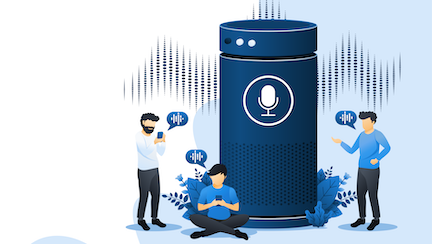
The new definition of content strategy.
I’ve given speeches and presentations about content strategy. Including one I recently gave internally to the Astro UX team a at the PwC Experience Center in Miami. A standard line to such presentations is my official definition of content strategy…
The act of analyzing, planning, creating, structuring, governing and distributing content in a way that optimizes business goals.
The business goals for content strategy serves both business and customers.
Satisfying customers. Giving customers the information they want, when they want it.
Driving sales. Giving customers the content they need to stimulate action and purchases through content marketing.
Reducing custom service calls. Providing content that allows customers to self-service problems and questions in order to reduce customer support costs.
Delivering good online brand experiences. Delivery of relevant, satisfying content via web, apps, and IOT products is also the delivery of an experience. Experience is the visceral delivery of brand. Good content drives that.
Giving employees better access to information. Findable, relevant, and engaging information on the business side also helps employees get to information that allows them to do their jobs more efficiently and serve customers better.
My old content strategy definition is correct. But…
Recently I was at a party. I met a guest. And congruent to cocktail party protocol, the “what do you do?” portion of the conversation came up like clockwork.
“I’m a content strategist,” I said to the guest. Her response was “Oh. What’s a content strategist do?
Expected question, but, this time, my reaction was unexpected.
As she finished asking her question, I suddenly had a flashback across my career. My work on websites, mobile apps, content marketing programs, and now, AI voice assistant conversations. I thought, to myself, what do all those things have in common? Suddenly, all of it all connected and I told her…
“ I make information useful.” That’s what content strategy is.
What did I mean by that?
Words, a form of information, are great. And information is powerful. But information (words, data, images) in itself is like an inert rock. Only when it is utilized and optimized in a way to match a human-centric task does it find meaning or produce value for humans.
Our once-inert rock can be structured to be a part of a wall. Our rock can be used as part of a sling to become a weapon to achieve a purpose like fight a war. Our rock can be positioned to hold a piece of paper in place against the wind.
Giving that once-inert data (or our metaphorical rock) a who, what, where, why and how to its existence is what imbues it with meaning to a user. Content shouldn’t just exist, it needs to have a purpose for humans.
That’s what content strategy is really all about.
Making information useful. And reviewing and optimizing to help that content retain it’s value to humans. If you just focus on the collecting rocks or just stacking words, which is easy to do, you’re missing the bigger picture.
I like the new definition. Compared to the more formal version it’s like a Fireman saying “I put out fires” instead of “I use water-based extinguishing solutions against actively combustible materials.”
Muuuuuch easier.































